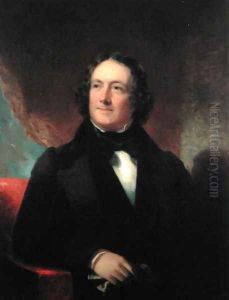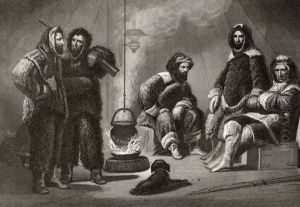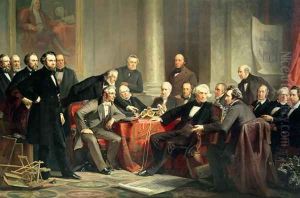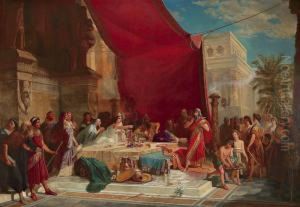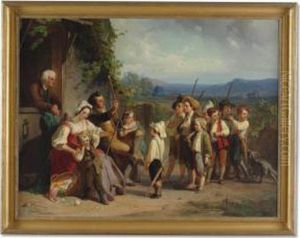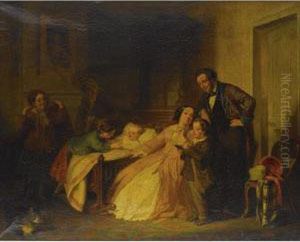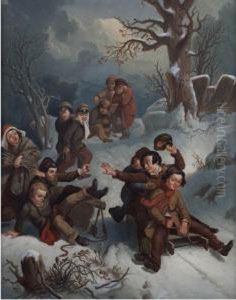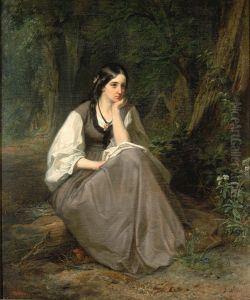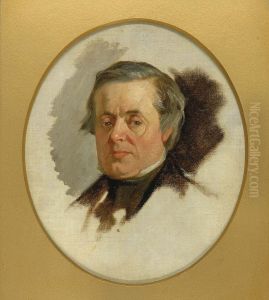Christian Schussele Paintings
Christian Schussele was a French-born artist who made significant contributions to American art in the 19th century. Born in Guebwiller, Alsace, France, on April 16, 1824, Schussele’s early life in Europe exposed him to classical art traditions, which would later influence his work in the United States. In 1848, at the age of 24, he emigrated to the United States, eventually settling in Philadelphia, Pennsylvania, a vibrant center for the arts and culture during that period.
After moving to Philadelphia, Schussele quickly immersed himself in the local art scene. He became a central figure in the city's artistic community, teaching at the Pennsylvania Academy of the Fine Arts (PAFA) for over two decades. His role as an educator was pivotal, shaping the next generation of American artists, including Thomas Eakins, who would go on to become one of the most significant figures in American art. Schussele's commitment to teaching and his influence on his students were among his most enduring legacies.
As an artist, Schussele was known for his detailed historical paintings, portraits, and genre scenes. His work often reflected themes of American history and society, capturing moments of national significance as well as everyday life. One of his most famous works, "Men of Progress" (1862), is a group portrait of America's leading inventors and scientists of the time, including Samuel Morse and Cyrus McCormick. This painting exemplifies Schussele's skill in portraiture and his interest in the progress of American society.
Throughout his career, Schussele exhibited his work at major institutions, including the Pennsylvania Academy of the Fine Arts and the National Academy of Design in New York. His paintings were well-received, earning him a reputation as a skilled painter and a respected member of the American art community.
Christian Schussele passed away on August 20, 1879, in Merchantville, New Jersey. Despite his European origins, his contributions to American art and education have made him a notable figure in the history of American art. His legacy continues through his works, which are held in collections across the United States, and through the generations of artists he influenced during his tenure as an educator.
